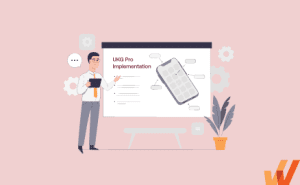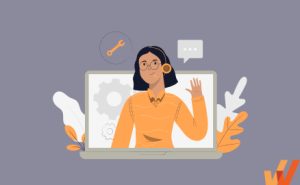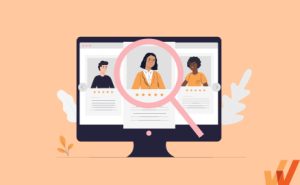12 HR Best Practices You Must Adopt in 2024
- July 13, 2022


Human resources (HR) has considerably evolved in the past decade and continues rapidly transform.
Following best HR practices and policies guides HR departments to increase business performance and drive results within their workforce.
To help HR teams focus their efforts on strategic human resource management, this article explores the best human resource practices that directly increase employee experience, engagement, improve retention, and more.
What are HR Best Practices?
HR best practices are internal guidelines organizations establish to streamline people-related procedures and add substantial value to the overall business and its goals. These practices optimize business processes to support the HR department to reach their full potential and enable successful business performance, regardless of the industry.
HR Practices vs. HR Activities
The HR function includes two key areas – HR activities and HR practices. Both must work together to enable the HR department to operate in a streamlined manner within the organization.
But it is possible to integrate the two without a clear understanding of both. Here are a few differences between HR practices and HR activities.
- HR practices are strategic in nature including planning, organizing, and managing the department.
- They represent a vital guidance system that coordinates with the executive business plan.
- They include the mission and goals of the HR department and how those goals align with the overall organization’s goals and policies.
- HR practices are carried out through employees and influence three important outcomes- career, success, employee performance and employee potential.
- Example of HR practices – formulating a method to measure and analyze the effects of an employee rewards program, creating a program to reduce work-related injuries, building a framework to adhere to employment laws, etc.
- HR activities include the daily operations involved with running an HR department such as recruitment, training, payroll, surveys, employee relations and benefits.
- Allows the mission and goal of the department to be carried out using activities and other methods that are readily available and accessible.
- Comprises transactional activities to be handled either in-house or by outsourcing.
- Example of HR activities – writing job descriptions, posting job ads, onboarding employees, managing payroll and benefits, hiring and firing, the administration of health benefits, etc.
In the most basic terms, HR practices look at what an organization wants to do and why, while HR activities address how to accomplish them.
How HR Best Practices are Changing in 2024
With unprecedented employee turnover, rapid market shifts, and disruption of global supply chains have left organizations dealing with constant change. To prepare and stay ahead of the curve, here’s how the HR best practices are changing to help leaders and organizations thrive in 2023.
1. Change management for leadership
As profound shifts occur in your business strategy, consistently offering leadership training can help the organization effectively manage change. Transition support and change management training for leadership improves the effectiveness of strong leadership and sets leaders up for success.
2. AI & machine learning
The introduction of AI and machine learning has made it easier for all HR professionals to streamline and improve their recruitment and hiring processes. Furthermore, AI and ML also help boost every employee’s productivity by automating tedious tasks.
3. HR digital transformation
As we move into a more agile world of work, HR transformation is becoming increasingly vital. The right approach to HR transformation can make or break business outcomes. Leaders need to decide whether they will hold onto old frameworks on the verge of becoming obsolete or embrace new tools and operating models as they reimagine ways of working.
Choosing the right HR software and technology is the most crucial component of HR digital transformation that sets your organization apart as a leader in the new world of work. Therefore, it is important to carefully consider what software is suitable for your approach that can automate and streamline processes, reduce time to hire, make onboarding more efficient, and move the needle on diversity and inclusion initiatives.

4. Self-service portals
The HR technology trend of employee self-service is expected in the modern workplace. It provides HR departments a way to become more efficient by automating manual tasks and allows organizations to re-imagine the core responsibilities of the HR team. The employee self–service (ESS) portals empower employees to manage their employment information. This reduces HR’s tactical duties to give them more time for strategic efforts such as building their learning and development (L&D) strategy or managing their talent pipeline. Tools like Whatfix can help you drive HR technology adoption to ensure you get the most from your technology investments.


12 HR Best Practices to Adopt in 2024
Here is a list of the top 12 HR best practices to adopt in 2024
1. Rewards and recognition
At its core, employee recognition is the open acknowledgment and appreciation expressed for an employee’s contributions to the organization. Rewards and recognition programs can impact many aspects of a business, including employee engagement, turnover, productivity, and morale. Enterprise HR teams can leverage employee recognition software to help manage their rewards and team member appreciation and celebration initiatives.
2. 360 feedback
360 feedback is a system where employees are given anonymous and confidential feedback on their competencies by their direct reports, manager, peers, and even customers. To conduct feedback 360, an online anonymous feedback form is sent to about 7 to 12 people that covers questions on a broad range of competencies related to the employee’s job.
This system enables HR to collect unbiased feedback, better understand HR development requirements (training, behavioral, leadership etc.), and get a holistic perspective about a potential leadership candidate.
3. Knowledge-sharing culture
Knowledge sharing is an internal knowledge management process that empowers employees to exchange information or skills with their peers. Sharing knowledge improves your employees’ sense of belonging within the organization, improves teamwork, increases engagement, reduces support training costs and tickets, and enables the entire workforce to become experts in their field and their organization. To build a knowledge-sharing culture, HR teams can:
- Hire a knowledge manager.
- Invest in a knowledge base software tool.
- Creating a set of internal guidelines to explain how employees should share their knowledge can make the process easier for them to follow.
4. Transparency
Your employees often may not like or agree with a particular decision, but clueing them in on it will impact their attitude towards it. Transparency is one of the essential HR best practices as it fosters trust, trust fosters security, and security fosters loyalty.
Access to business information should be available to all employees to foster buy-in through inclusivity. Sharing business successes and failures with your employees makes them feel motivated and engaged with the organization.
5. Ongoing training program
Engaged employees are always more productive and motivated to do jobs in the best way possible, which is why providing ongoing employee training and development programs is one of the most crucial HR best practices. Effective training enhances your employees’ knowledge and makes them proficient in their jobs to give better results. Furthermore, regular learning and development initiatives create a culture of engagement, make individuals feel valued and invested in their work, prevent workplace contentedness, and keep employees motivated.
Invest in digital adoption platforms like Whatfix to get the maximum ROI on your employee training and development programs. Using DAPs as your training software empowers employees to upskill themselves on the latest tools, applications, or processes without disrupting their workflow and productivity. It’s the best resource to make your employee development plans future-ready and valuable.

✓ Thank you, the template will be sent to your email
6. Engagement and open communication
Keeping employees engaged in today’s competitive marketplace is critical to a business’s success. When employees find their jobs challenging, engaging, and rewarding, they’re more likely to stick around and invest themselves in their work.
HR plays a crucial role in employee engagement and ensures involvement by promoting an environment of mutual trust. Open and transparent communication encourages innovation, collaboration, and sharing of ideas and experiences.
HR leaders need to effectively communicate with their employees on everything from expectations and responsibilities to larger company goals and organizational decisions — but communication needs to be a two-way street. Employees should also feel comfortable expressing their ideas or concerns to the HR.
7. Compliance
Lack of compliance with local, national, and international labor legislation can blow any of your HR practices out of the water. Therefore, it is crucial to have a labor law expert on board, either as an employee or as a service provider, to whom you can run all your HR policies, procedures, and contracts for approval before implementing. Also, ensure that management and staff are updated with their rights and legal parameters.
Additionally, compliance training is mandatory to familiarize your employees with regulations and laws governing an organization or a particular job role. These training initiatives help minimize risk, ensure workplace safety, and improve the overall work environment for employees.
8. Prioritize workplace safety
Although workplace safety has always been important, there is definitely a renewed focus on this critical HR practice since COVID. Here are a few things for the HR teams to consider when working to create a safe environment for their employees:
- Regularly sanitize desks and computer monitors with disinfectant.
- Follow social distancing while placing employee desks.
- Mandate wearing masks for all employees.
- Implement workplace safety programs.
- Personal protective equipment should be safely designed, constructed, and fit comfortably.
- Employers should encourage employees to take regular breaks to prevent tiredness and fatigue.
9. Flexible work opportunities
Employees are attracted to flexible working schedules because flexibility makes them more productive by giving them the freedom to work – when and how they want. The luxury of the non-traditional work schedule reduces employee stress, increasing their productivity.
Organizations offer flexible work hours to promote a healthy work-life balance, attract top talent, boost employee morale, and promote employee engagement and retention.
10. Cloud-based HR software
HR software help manage, optimize, and automate HR tasks. These systems are often cloud-based subscription models that easily integrate with existing apps and can be customized to suit an organization’s needs, goals and budget. Implementing HR software is a vital HR best practice because they help reduce time spent on low-impact admin tasks, sparing the HR professionals more time to spend on the most—productive, strategic outcomes. Other significant benefits include:
- Reduced human error.
- Improved data organization.
- Robust people analytics.
- Continuous feedback.
- Compliance with federal regulations.
11. Selective hiring
Selective hiring enables organizations to bring in employees who add value. It involves developing hiring strategies that are more proactive in their approach to attract highly-qualified candidates with specific skill sets. Selective hiring includes – HR teams conducting a thorough job analysis of the vacant positions, looking into the publicly available labor force data to target recruits, and reaching out to current employees for referrals.
Selective recruitment benefits organizations in terms of cost savings over time. Less time and money is wasted recruiting and interviewing candidates who aren’t the right fit for the position.
12. High-performance teams
High-performance teams are crucial for any company when it comes to achieving success. Creating and nurturing high-performance, effective teams is one of HR’s key responsibilities. A highly effective team is innovative in problem-solving and is known for displaying a high level of communication and collaboration, delivering consistent and superior results.
Different methods can be used to facilitate teamwork, such as measuring team performance, rewarding team excellence, and implementing communication software, feedback tools, project management tools, etc.
This article lists the 12 HR best practices, which touch upon all areas of HR – from hiring and training to offering rewards and the creation of a knowledge-based culture for people to share ideas. When implemented, these best practices form the basis of effective human resource management.
Supercharge your HR digital transformation efforts with a simple interface bridging users and technology. Implement digital adoption platforms to solve complex people-related transformation issues, elevate employee experience, increase HCM application adoption, and improve employee productivity.
Usher in a new era of employee engagement, efficiency, and productivity with Whatfix
Thank you for subscribing!


